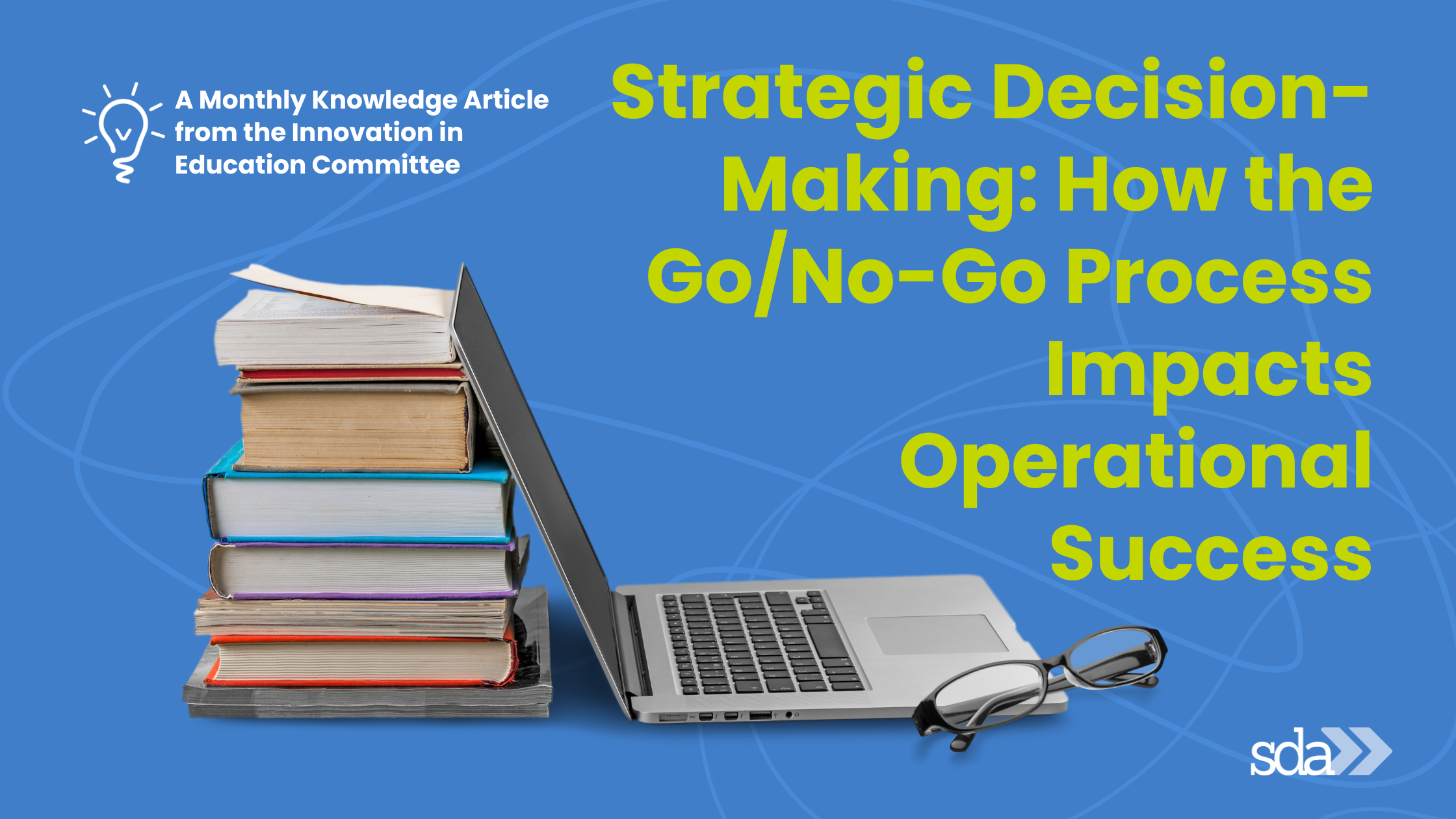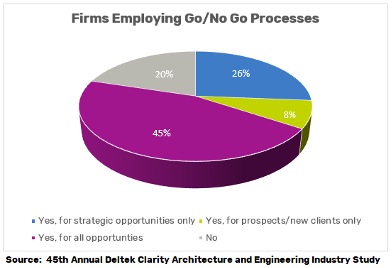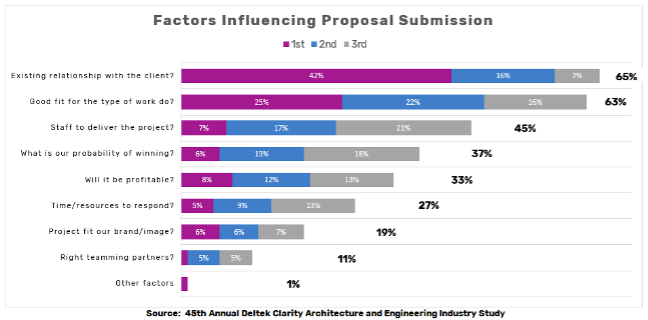  
|
Posted By SDA National,
Thursday, May 15, 2025
Updated: Thursday, May 15, 2025
|

Whether you're an admin, office manager, or assistant in the A/E/C industry, mastering the art of performance reviews is crucial to both your success and the success of your firm. This isn't just about checking off a box; it's about enhancing productivity, fostering growth, and creating a culture where everyone can thrive. Let’s dive into why this process is essential, how to conduct it effectively, and the strategies you can use to make each review impactful.
The Importance of Performance Reviews: Performance reviews are more than just a formality; they’re a vital tool for both evaluating an employee’s contributions and setting the stage for their future growth. For admins and office managers in the A/E/C industry, these reviews are a chance to ensure that staff members are aligned with the firm's objectives, motivated, and equipped with the skills they need to succeed. When done correctly, performance reviews can boost morale, increase productivity, and help retain top talent.
Timing Is Everything - When to Do It Right: The timing of a performance review can significantly impact its effectiveness. While annual reviews are standard, consider incorporating quarterly check-ins to address issues in real-time and celebrate small wins. For remote employees or those working off-site, it’s essential to schedule reviews in advance to ensure both parties can engage in meaningful dialogue without distractions.
Planning and Preparation: The Foundation of Success: A successful performance review starts long before the actual meeting. Begin by setting clear, measurable goals that align with the firm's objectives. Document your observations throughout the review period, noting both achievements and areas where improvement is needed. This preparation ensures that your feedback is specific and constructive, rather than vague and general.
Tailoring Reviews to Different Roles: Not all reviews are created equal, especially in the A/E/C industry, where roles can vary greatly. Here's how to tailor your approach:
- Field Workers: Focus on hands-on skills, teamwork, adherence to safety protocols, and the ability to meet project deadlines.
- Project Managers: Emphasize leadership qualities, decision-making skills, budget management, and communication with both clients and team members.
- Engineers and Technical Staff: Highlight problem-solving abilities, technical proficiency, innovation, and the ability to adapt to changing project requirements.
Customizing your reviews based on the role ensures that you're evaluating employees on criteria that truly reflect their responsibilities.
Conducting the Review: Feedback Strategies That Work
When it comes to giving feedback, your approach can make all the difference. Start by conveying your positive intent to help the employee grow and succeed. Use the "STAR" method (Situation, Task, Action, Result) to deliver specific feedback that focuses on observable behaviors rather than personal attributes. This approach minimizes defensiveness and opens the door to constructive conversation.
The Art of Virtual Performance Reviews
In today's hybrid work environment, conducting virtual performance reviews has become a necessity. To make these reviews as effective as in-person meetings, ensure you have a stable internet connection and a quiet, private space. Use video conferencing tools to maintain a personal touch and make eye contact. Share your screen to go over key points, and be sure to follow up with a written summary of the review to reinforce what was discussed.
Post-Review Action Steps: Turning Feedback into Progress
The real impact of a performance review lies in what happens afterward. Set clear action items for both the manager and the employee, with specific deadlines for follow-ups and progress check-ins. Regular check-ins help keep goals on track, provide opportunities to address any obstacles, and reinforce the commitment to continuous improvement.
Fresh Ideas for Performance Management
Innovation isn’t just for design; it applies to performance reviews too! Consider implementing peer reviews or 360-degree feedback to gain a broader perspective on an employee’s performance. Encourage self-assessments that allow employees to reflect on their achievements and identify areas where they seek growth.
Building a Culture of Continuous Feedback
Performance reviews should be part of an ongoing conversation, not a once-a-year event. Encourage open communication and make feedback a two-way street. When employees feel heard and valued, they're more likely to be engaged and motivated to reach their full potential.
Conclusion: Elevating Performance Reviews in the A/E/C Industry
Effective performance reviews are a powerful tool for driving success in the A/E/C industry, especially for admins, office managers, and assistants. By tailoring the process to fit different roles, preparing thoroughly, providing constructive feedback, and following up with actionable steps, you can transform these reviews from a dreaded task into a valuable opportunity for growth and development.
Stay connected with SDA for more insights and best practices that will help you elevate your career and add value to your firm. Together, we can redefine what it means to support excellence in the A/E/C industry.
Pro Tips for Admins: Streamlining Hiring & Operational Workflows
Admins and office managers are often the glue holding the hiring process together—whether you're screening resumes, juggling schedules, or helping managers prep for interviews. Here are a few tried-and-true tips to help you shine even brighter in your role:
• Centralize Your Communication:
Tracking candidate emails, interview notes, and feedback in one place (such as an ATS or shared platform) prevents critical info from slipping through the cracks. A centralized system = a smoother hiring experience for everyone involved.
• Standardize Interview Questions:
Consider building a firmwide interview question bank that aligns with your core values and culture. Not only does this keep interviews consistent and equitable, but it also helps hiring managers stay focused on what truly matters.
Proactive Practices to Keep You Ahead of the Curve
• Keep Job Descriptions Fresh:
Regularly update job roles and responsibilities to reflect what’s actually expected in the position today—not what was listed three years ago.
• Stay Legally Informed:
Attend SDA webinars or browse resources to stay current with employment laws, compliance updates, and administrative trends in the A/E/C space.
• Learn the Tools:
Even if you're not in HR, learning how to navigate or evaluate ATS platforms and AI-driven resume screeners can help you support your team more strategically.
Spotlight Resource: SDA Job Board
Looking for A/E/C-savvy candidates? SDA’s industry-specific job board reaches experienced, vetted professionals who already speak the language of design, engineering, and construction admin.
🔗 Post or browse jobs here
Tags:
AEC Business
AEC Jobs
AEC Learning
Innovation in Education
Job Search
SDA
SDA National
Permalink
| Comments (0)
|
  
|
Posted By SDA Headquarters,
Tuesday, August 20, 2024
Updated: Tuesday, August 20, 2024
|

In the fast-paced world of architecture and design, each project represents an opportunity for creativity, innovation, and growth. However, not all projects are equally beneficial, and deciding which ones to pursue demands thoughtful consideration. This decision point is where the Go/No-Go process comes into play—a dynamic approach that assists firms in navigating the complex terrain of client and project selection.
Why It Matters Beyond Direct Responsibilities:
Even if it is not directly within your daily responsibilities, understanding the Go/No-Go process is crucial for administrators, HR professionals, and office managers. It impacts overall company strategy, resource allocation, and team dynamics, influencing everything from workload distribution to client relationships and financial health.
Key Factors in the Go/No-Go Process:
- Profit Potential: Assess the project's profitability in terms of time, resources, and labor investment.
- Past Client Experiences: Reflect on previous interactions with the client to gauge reliability and ease of collaboration.
- Future Collaboration Opportunities: Evaluate the potential for ongoing partnerships with the client beyond the current project.
- Efficiency of Collaboration: Consider how smoothly the project will proceed based on past experiences.
- Staff Capacity: Evaluate current workload and staff capacity to determine feasibility.
- Competitive Landscape: Analyze market competition and your firm's competitive positioning.
Why the Go/No-Go Process is Essential:
- Only 45% of A/E firms have a formal Go/No-Go process, and even fewer use it strategically (26%).
- Strategic use can significantly impact profitability (average of 18.7% for A/E firms) by optimizing resource allocation.
- It minimizes risk exposure, enhances team alignment, and ensures efficient resource utilization.
Considerations Beyond Direct Project Management:
Marketing costs can account for up to 12% of net revenue, underscoring the importance of strategic decision-making.
The process ensures informed decisions, mitigates financial risks, and maximizes return on investment.
Factors Influencing Go/No-Go Decisions:
Key considerations include regulatory compliance, technological readiness, contract terms, and client engagement levels. These factors collectively contribute to successful project outcomes and client satisfaction. According to the 45th Annual Deltek Clarity survey, A|E companies rank factors influencing proposal submission as follows:

Questions to Consider:
- Do we have design experience with the project type?
- Is the company experience in the project delivery method, e.g., Design-Bid-Build, CM at Risk, or Design-Build
- Are we well-versed in relevant regulations and technologies?
- Does the contract align with company policies regarding indemnity and liability?
- Can the company meet the insurance requirements?
- Are we comfortable with the fee type, such as time and materials, time and materials to a max, fixed fee, or by unit, and the scope of work?
- Does the current percentage of client profitability warrant pursuing the project?
- Is there sufficient client engagement to proceed with proposal preparation effectively?
- Does the contract allow progress billing, or will large labor expenditures be made before payment?
Understanding and applying the Go/No-Go process strategically not only enhances project success rates but also supports broader organizational goals. By aligning decision-making with company strategy and resource capabilities, administrators, HR professionals, and office managers play a vital role in driving sustainable growth and operational excellence within architectural and design firms.
Want to learn more? Here are some resources:
SDA Program Recording: The Go/No-Go Process: Promoting Effective Marketing & Risk Management
SDA Forms & Templates: Marketing
LinkedIn Article: Five Basic Rules for Better Go/No GO Decisions in A|E|C Marketing
45th Annual Deltek Clarity Architecture and Engineering Industry Study
Tags:
AEC Marketing
Go/NoGo
Innovation in Education
SDA
SDA National
Permalink
| Comments (1)
|
  
|
Posted By SDA National,
Wednesday, May 15, 2024
Updated: Thursday, May 16, 2024
|

As a general rule, when there is a breach of contract, the injured party—in the case of a building owner and architect/engineer, the owner—must receive what they had a right to under the contract, but no more. A windfall or a benefit greater than would have been received had the contract been performed correctly is not allowed at the expense of the performing party or architect in this case.
Black’s Law Dictionary describes betterment as:
“An improvement of a … building that goes beyond repair or restoration.”
For example, suppose an owner realizes that a standard built-in (plaster/painted) receptionist station is facing the wrong way on the drawings and was built as such. In that case, the owner cannot now ask for the station to be faced with marble or add a planter or other enhancement. This additional work, called “betterment,” is outside the scope of the original contract, and its costs are not allowed.
In another example, no light fixture has been shown in an entry closet. During construction, the owner adds a light fixture in the entry closet. All expenses related to adding the fixture are betterment.
Betterment depends on what is reasonable. If an improvement is necessary and reasonable to complete the terms of a contract, then it will be allowed. If it is unreasonable, it will be considered betterment; thus, the amount of damages that constitute the upgraded improvement is not allowed.
For example, if a city ordinance required the sidewalk around a building to be 48”wide, and it was only constructed 40” wide, the owner would benefit from the additional 8,” and it was required. The cost of the additional 8” is betterment, but demolishing pavement, for example, to allow for the additional 8” would be a cost for the engineer as it is reasonable and necessary to bring the sidewalk up to code.
Betterment in the case of omission in design. Design professionals frequently invoke the betterment or added value defense in the context of claims involving omissions in design documents. Generally, courts require owners to pay what the omitted item would have cost had it been included in the original design. Accordingly, if the error is not discovered in the design stage, the owner should not have to pay for any additional labor or materials necessary to correct the error or the cost of necessary retrofitting demolition that would not have been part of the original design.
For example, an engineer was sued for designing an inadequate tank-drain septic system with a 1,000 sq ft drainage field instead of the required 1,200 sq ft drainage field. The owner would have had to pay the costs of the additional 200 feet required, and the engineer is not obligated to pay for that cost, but only any additional costs incurred, if any.
Timing is crucial for the betterment defense. Traveler’s Risk Management Advisory Bulletin states:
“Timing plays a crucial role in the availability of the betterment defense and to what extent it can apply to reduce monetary liability. The key timing components are whether the project has been bid and a contract signed with the contractor, and if so, has this design element been constructed? If not, the owner may not have suffered compensable costs, at least not yet. With no compensable costs in play, a design change may fix the problem; however, the design professional will generally not be compensated for their re-work. On the other end of the spectrum, if the owner or contractor has spent money to construct all or a part of a deficient design, and must spend more to remediate the constructed design, the owner will attempt to recover these costs from the design professional who may have both a betterment defense and an associated defense of limitation of expense to the owner’s ‘first costs.’”
The concept of betterment is a highly complex but potentially money-saving defense. Consultation with the insurance company’s legal counsel and your construction lawyer is necessary to determine the correct structure of the claim, precedents, and arguments to use. Architects must understand that consulting engineers may also use this defense against them in suits.
Want More Information?
Click here for a video by Baker Law, “What is Betterment – The “No Free Lunch” Rule – in Design and Construction,” by Jeremy Baker, 2/26/2021.
Click here for a Federal Highway Administration (FHWA) overview and examples of transportation betterment under emergency relief.
References:
Atkins, FAIA, James B. & Simpson, FAIA, Grant A. AIArchitect, Vol. 13, November 3, 2006, “A Loss Cause Too: Betterment.”
Travelers Advisory Bulletin: A Risk Management Publication for Design Professionals.
NOTE: SDA does not endorse any products or services mentioned, and SDA does not assume responsibility for any circumstances arising out of the interpretation, application, use or misuse of any information presented. SDA recommends the reader consult the appropriate legal, financial or human resource counsel before implementing information contained herein.
Tags:
Betterment Defense
Innovation in Education
Risk Management
SDA National
Permalink
| Comments (5)
|
  
|
Posted By Administration,
Tuesday, April 16, 2024
Updated: Monday, April 15, 2024
|

Hey, SDA Trailblazers!
We are thrilled to announce the formation of the SDA Innovation in Education Committee (IEC). In conjunction with our national chapters, this committee represents SDA’s commitment to stepping up our learning tools and furthering the professional growth of design firm personnel across the United States and Canada.
Guided by our Committee Leader, Brittany Jamison, CDFA ,and committee members Anne McNeely, CDFA; Penny Nelson, CDFA; Deborah Gill, CPA, FSDA; Emily Moline Meyer, CDFA; and Kimberly Celenza, the IEC will craft enriching content to launch in April. These individuals bring their unique skills and experiences to the committee, contributing to the diversity and richness of the resources provided. Together, they will work towards creating a robust reference system that enables SDA members to navigate challenges and achieve excellence within the A/E/C industry. We aim to provide A|E|C specific education, best management practices, and training on professional standards.
Using the CDFA (Certification in Design Firm Administration) Resource Guide as the stepping-off platform, the IEC will concentrate its efforts on the six focus areas essential for the success and advancement of best practices in design firm management: finance, human resources, marketing, project management, office administration, and leadership and actively curate additional resources for each one.
This concentrated effort ensures SDA members access to a wealth of information and tools to excel in their respective roles, including blogs, white papers, book and article references, infographics, webinars, and other relevant information.
We invite you to join the committee or share any information, resources, or concepts you want to see covered by the IEC. Contact Brittany Jamison (bcharlick@cross2dg.com) and she will be happy to give you all the information you need.
Stay tuned for more updates as we dive deep into continuing education, best management practices, and training on professional standards. Your growth matters to us, and we’re impressed with your work, participation, and engagement!
#ABL – AlwaysBeLearning
Innovation in Education Committee
Tags:
AEC Learning
Innovation in Education
SDA
SDA National Committee
Permalink
| Comments (1)
|
|